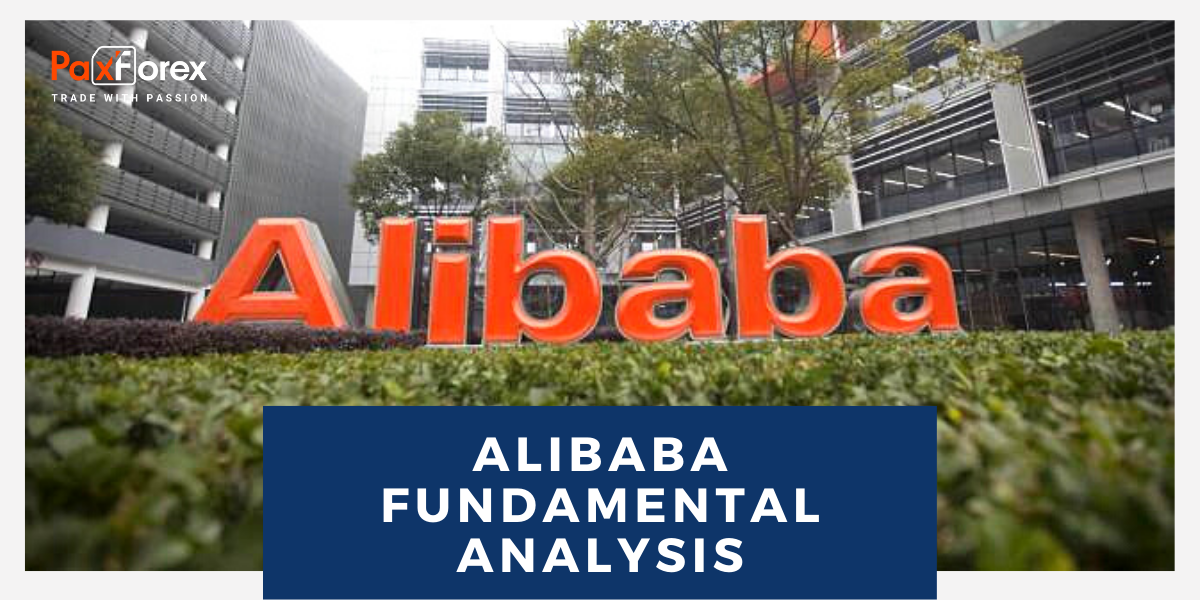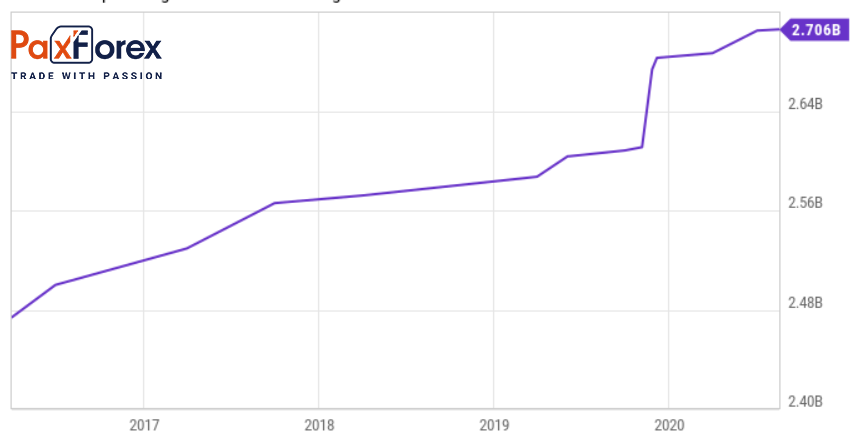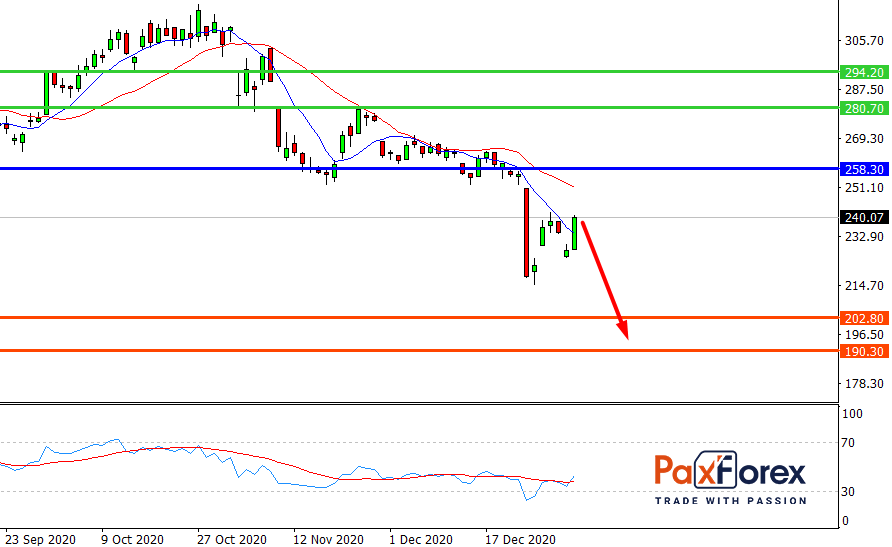
Source: PaxForex Premium Analytics Portal, Fundamental Insight
Recently, Alibaba increased its current share buyback plan, which will last until the end of 2022, from $6 billion to $10 billion. The Chinese tech giant launched its initial buyback plan last May, and the higher limit looks like an attempt to comfort investors as the company faces more challenges.
Those challenges include slower-than-expected growth in its core commercial business last quarter, the suspended IPO of its Fintech-owned Ant Group subsidiary, and an antitrust investigation into the e-commerce business. Unfortunately, a $10 billion shares buyback won't solve these problems for three simple reasons. Let's explore which ones.
- Alibaba's previous buybacks have been inconclusive
This isn't the first time this Chinese giant has launched a multibillion-dollar shares buyback plan. In 2015, it launched a two-year buyback plan worth up to $4 billion. In 2017, it launched another two-year buyback plan worth up to $6 billion.
In fiscal 2016, which ended in March of that year, Alibaba bought back $3.1 billion worth of stock. In fiscal 2017, it did not buy back shares from that program, but it did buy back some of its shares from SoftBank in separate transactions.
The company did not buy back any shares in the recently launched $6 billion plan in fiscal 2018. In 2019, $1.6 billion worth of stock was bought back, reducing the remainder of the authorization to $4.4 billion before it expires.
In short, Alibaba attempted a $10 billion shares buyback over four years, but only bought back $4.7 billion worth. As for the current buyback plan, Alibaba has not repurchased a single share in the fiscal year 2020.
This gap underscores the problem with buyback announcements-the company is setting aside some cash for future buybacks but is not obligated to buy back any of those shares. So raising the cap from $6 billion to $10 billion may be completely pointless.
- The buybacks have not reduced the number of shares in circulation
In an ideal situation, a buyback program allows a company to buy back its shares at a low price and then cancel them to reduce the total number of shares outstanding in order to increase the value of the remaining shares.
However, companies also often use buybacks to artificially increase their earnings per share as a stopgap to net income growth or to offset dilution from stock-based compensation. Neither strategy helps investors.
$10 billion. - is an amount that could be raised, but it would be less than 2% of Alibaba's current market value. In theory, Alibaba could reduce its share count a bit with the new buyback plan-but the company's share count has actually increased since it has spent billions of dollars on buybacks over the past five years:

So Alibaba likely launched its previous buyback programs to make up for the dilution from stock compensation, which has risen steadily over the past three years, rather than reduce its total number of shares.
- The company's cash would have been better spent on other purposes
Companies usually start paying dividends and buying back shares when they run out of ways to spend their cash. As a result, dividends and buybacks are often associated with mature companies, not growth companies.
Alibaba is not a slow-growth company. Analysts expect its revenues and profits to grow 48% and 37%, respectively, this year as its core commerce and cloud businesses continue to expand. But it still faces stiff competition in both markets, with JD.com and Pinduoduo being steady competitors in the e-commerce market, while Huawei and Tencent are stiff rivals in the cloud computing market.
To stay ahead of competitors, Alibaba needs to expand its online and physical stores, enter new markets such as video games, and expand its infrastructure. Alibaba's recent antitrust problems, which mainly focus on exclusive deals with sellers, may also force it to find new ways to attract sellers and expand its gap against JD and Pinduoduo.
Based on these facts, it's clear that it doesn't make sense to allocate $10 billion -- nearly half of its free cash flow over the past four quarters -- to share buybacks. Instead, this announcement seems like an attempt to reassure investors amid a flurry of negative news.
Buybacks work well for mature, slow-growth companies that generate a lot of money and really want to reduce the number of shares outstanding. Alibaba is not one of those companies-it's just trying to break a streak of negative headlines and reassure worried shareholders. So investors should look away from the noise and see if the company can actually solve its short-term problems.

While the price is below 258.30, follow the recommendations below:
- Time frame: D1
- Recommendation: short position
- Entry point: 240.40
- Take Profit 1: 202.80
- Take Profit 2: 190.30
Alternative scenario:
If the level 258.30 is broken-out, follow the recommendations below:
- Time frame: D1
- Recommendation: long position
- Entry point: 258.30
- Take Profit 1: 280.70
- Take Profit 2: 294.20













